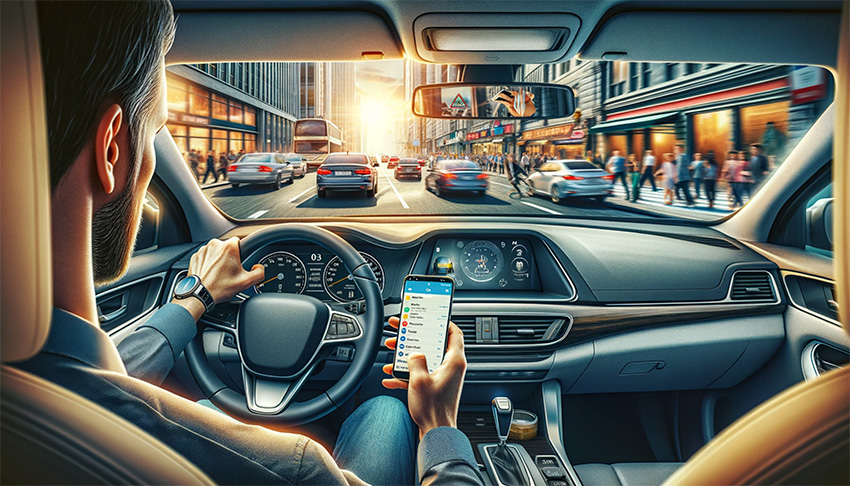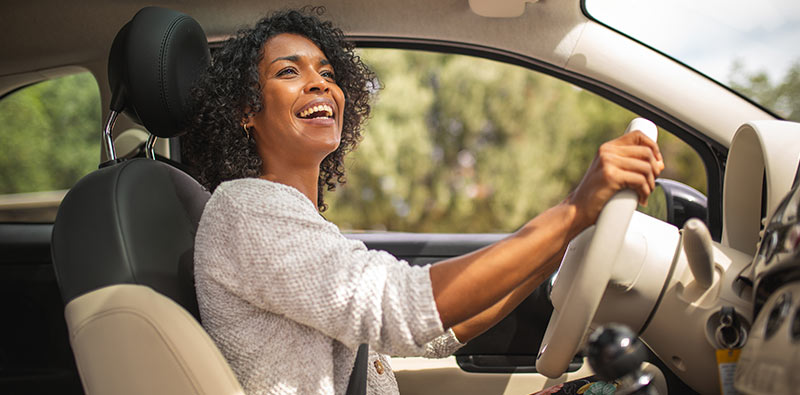April is Safety Driving Month
By Matt Rehlander, Senior Director of EHS, Fleet and Risk Management for National OnDemand
Many Americans’ preoccupation with productivity and connectedness keeps a smartphone in their hands—even when they are driving.
We all have tasks to accomplish and a limited amount of time to do them. New technologies are constantly developed. Car phones evolved into cell phones, then into smartphones with internet connectivity.

Cell coverage became increasingly seamless and fast. This connectivity enabled us to be in constant real-time communication with work, family, friends, and social media followers. It is natural to think that hours spent driving, once considered wasted, could now be made “productive” with the phone.
Today, nearly every working-age American has a smartphone with the potential to connect to the wider world through phone calls, email, voicemail, texts, apps and the internet. Despite public sentiment turning against cell phone use while driving, many still admit to engaging in this dangerous behavior.
While hands-free technology might be marginally safer than handheld devices, eliminating driver use of cell phones and IVIS will always be the safest option. Research shows that any driver’s use of electronic devices increases cognitive distraction – the inability to focus on a primary task such as driving.
The human brain cannot multitask or do two things at once. Instead, the brain is constantly attention-switching between the two tasks, never focusing on either one. This means that even when people engage with their IVIS system, they cannot also focus on driving.
Cognitive distraction is harmless if one uses a phone and watches TV simultaneously at home. It can be deadly if one is using a phone while driving.

The Distracted Driving Problem
Distracted driving is inattention that occurs when drivers divert their attention from driving to focus on another activity. Distractions may include using electronic devices such as cell phones or navigation systems, eating, or talking to passengers.
Most people recognize when they are visually and manually distracted and seek to disengage from these activities as quickly as possible. However, people typically do not realize when they are cognitively distracted.
Types of Distraction Behind the Wheel
Cognitive: The mental workload associated with a task that involves thinking about something other than driving
Manual: Tasks that require the driver to take a hand off the steering wheel and manipulate a device
Visual: Tasks that require the driver to look away from the roadway
Visual/Manual: Tasks that draw eyes and a hand off the steering wheel to manipulate a device
Types of Tasks
Primary – Task that receives higher cognitive focus
Secondary – Task that is monitored in the background
Eight people die every day on our roads in distraction-affected crashes.
Why multitasking is a myth
“Multitasking” is valued in today’s culture, and the desire for increased productivity makes it tempting for drivers to engage in tasks unrelated to driving. Drivers may believe they can safely do two things simultaneously; however, they must always be prepared to respond to the unexpected.
Under most driving conditions, drivers are performing well-practiced driving tasks. For example, experienced drivers automatically slow down when they see yellow or red lights, and activate turn signals when intending to make a turn or lane change.
Staying within a lane, noting the speed limit and navigation signs, and checking rear- and side-view mirrors are also automatic tasks for most experienced drivers. People can do these driving tasks safely with an average cognitive workload, such as listening to music.
During most road trips, nothing bad happens, but that can lead people to feel a false sense of security or complacency when driving.
People often think they are effectively accomplishing two tasks at the same time. It is possible to complete a phone conversation while driving and arrive at the destination without incident. Still, it is a misconception that the tasks can be done simultaneously and safely.
- People do not “multitask.” Their attention switches back and forth between tasks very quickly.
- People cannot accomplish more than one cognitively demanding task in the same time frame with optimal focus and effectiveness given to each task. One task is primary, and the other is secondary
Multitasking impairs performance
A driver’s response to sudden hazards, such as another vehicle, weather conditions, work zones, animals or objects in the roadway, is often the critical factor between a crash and a near-crash.
When the brain is experiencing an increased workload, information processing slows, and a driver is much less likely to respond to unexpected hazards in time to avoid a crash.
For example, people can safely walk down the sidewalk while chewing gum in a city crowded with motor vehicles and other hazards because chewing gum is not a cognitively demanding task.
When chewing gum and talking, people are still able to scan the environment for potential hazards visually:
- Light poles along the sidewalk
- Boxes are suddenly pushed out a ground-level doorway before the delivery man emerges.
- Moving vehicles hidden by parked vehicles
- Pets on leashes
- Uneven sidewalks
People do not perform as well when simultaneously trying to accomplish two attention-demanding tasks. Even pedestrians are distracted while talking on cell phones.
The solution is easy: Make driving the primary focus and perform other cognitively demanding tasks only when safely parked. Attentive drivers have a better chance of avoiding crashes than distracted drivers or pedestrians.
Driving should never be the secondary task. The driver’s most important responsibility is to arrive safely at the destination.
